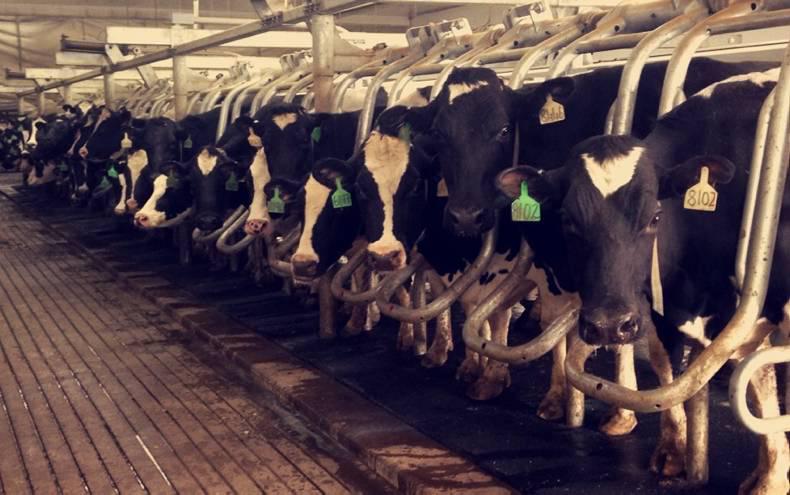After owning a dairy farm in Ireland for over 25 years, Rodney and Dorothy Elliott, with the intention of expansion, decided to move to South Dakota. The building of Drumgoon began in 2006, offering the ideal location due to its close proximity to many tillage farms.
This relationship between the Elliotts and the local tillage farmers has proved to play a vital role in the efficiency of Drumgoon Dairy, with surplus manure being pumped onto crop lands as fertilizer and Drumgoon benefiting from locally sourced feed. The state of South Dakota also offered little or no regulations on livestock movements within state.
It is impossible to imagine or grasp the sheer scale and vastness of farming in South Dakota without seeing and experiencing in person the daily routine on Drumgoon dairy. With a total head count of 7,000 live animals, over 1,000 acres of tillage land and 200 acres of pasture, expectations could not have prepared me for the size of this operation. Size is the main difference between the average dairy farm in the US and in Ireland, but many daily issues are similar to those experienced on Irish farms, with problems being more frequently experienced on Drumgoon due to the extreme numbers of livestock.
Apart from the more obvious difference in size and scale, climate is also a major factor in comparisons between Ireland and South Dakota, with temperatures plummeting to -30C in winter and reaching 38C during summer months. Temperatures at certain times of the year can, in one day, experience the average range Ireland experiences in one year.
Calving
Calving on Drumgoon occurs all year round, with colostrum testing taking place too. Heifer calves receive the highest quality colostrum of above 23% protein levels. Calves are individually housed in hutches for the first three weeks of life, before entering into an automatic calf feeding system in groups of 25, similar to many dairy farms in Ireland.
Heifer calves are weaned, grouped and enclosed in outdoor pads, year round, where they will be kept until before calving. All heifers born on Drumgoon are kept for breeding. Lactating cows are housed and fed indoors and milked every eight hours every day of the year. Milk production is excelling on Drumgoon Dairy, with close to 100,000 litres of milk being produced per day from an average of 2,700 cows.
Having completed my first week of work experience on Drumgoon Dairy, I am still in the process of trying to grasp the differences between the Irish and American dairy industries and farming practices. With plans of expansion taking place, I look forward to the remainder of my time here and seeing what the future holds for Drumgoon Dairy.
Maeve Regan is a third year Agricultural Science student at UCD






SHARING OPTIONS